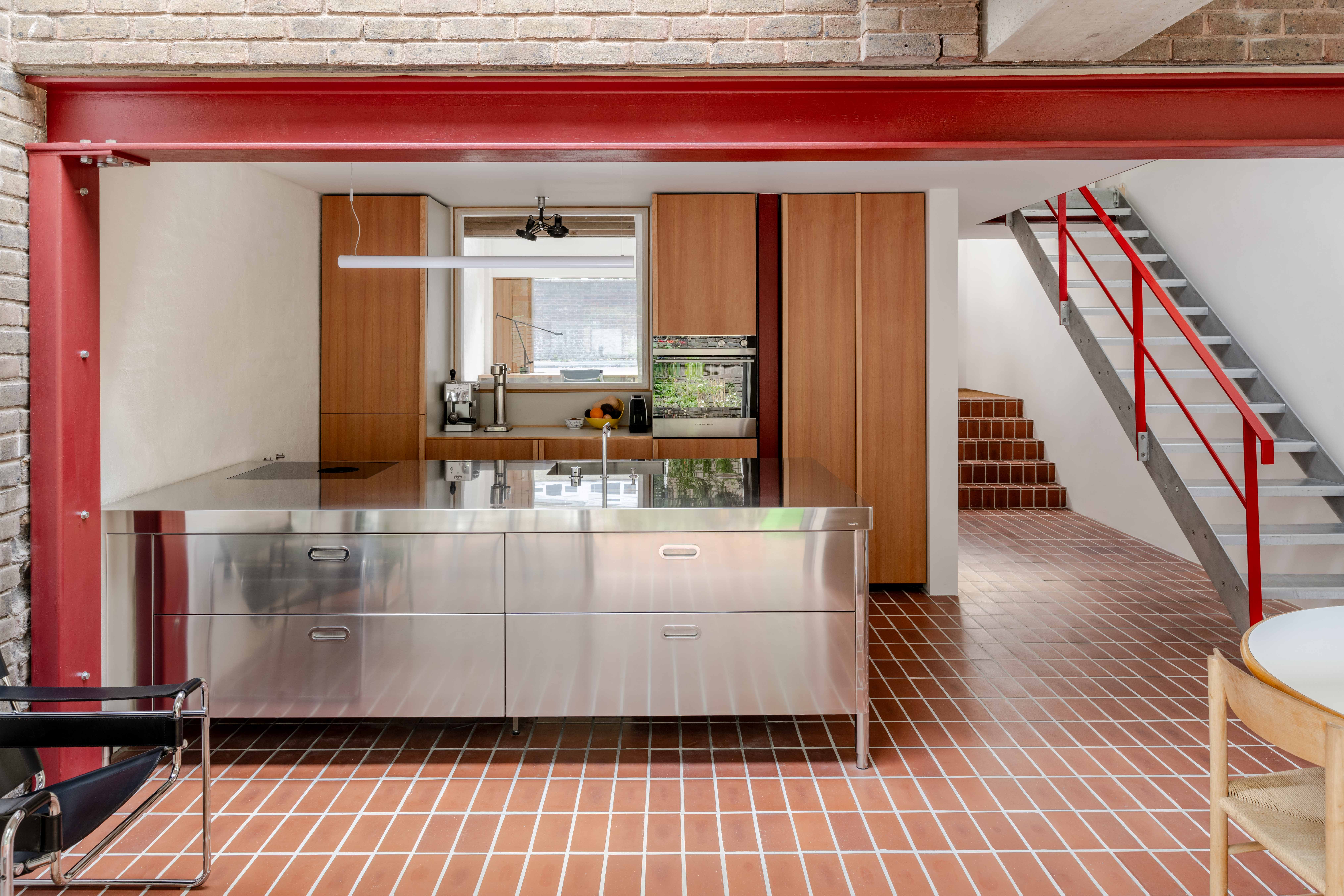
The 1970s split-level home that became Elemental House was a perfect match for Johan Hybschmann, director at Archmongers, a London practice specialising in residential retrofit and modernist architecture houses that is known for its renovation of a 1972 apartment in the Barbican and Little Browning, a late 1960s home on Forest Hill’s Dulwich Estate named the winner of the Don’t Move, Improve 2022 competition.
No other buyer could see past the dangling wires and scurrying mice of this house in London's Clapton, which had been left untouched since the 1970s. But the potential was clear for Hybschmann and his wife, Anita Freeman, who soon set about turning the dark brick terraced house into a spacious, light-filled home swathed in greenery.
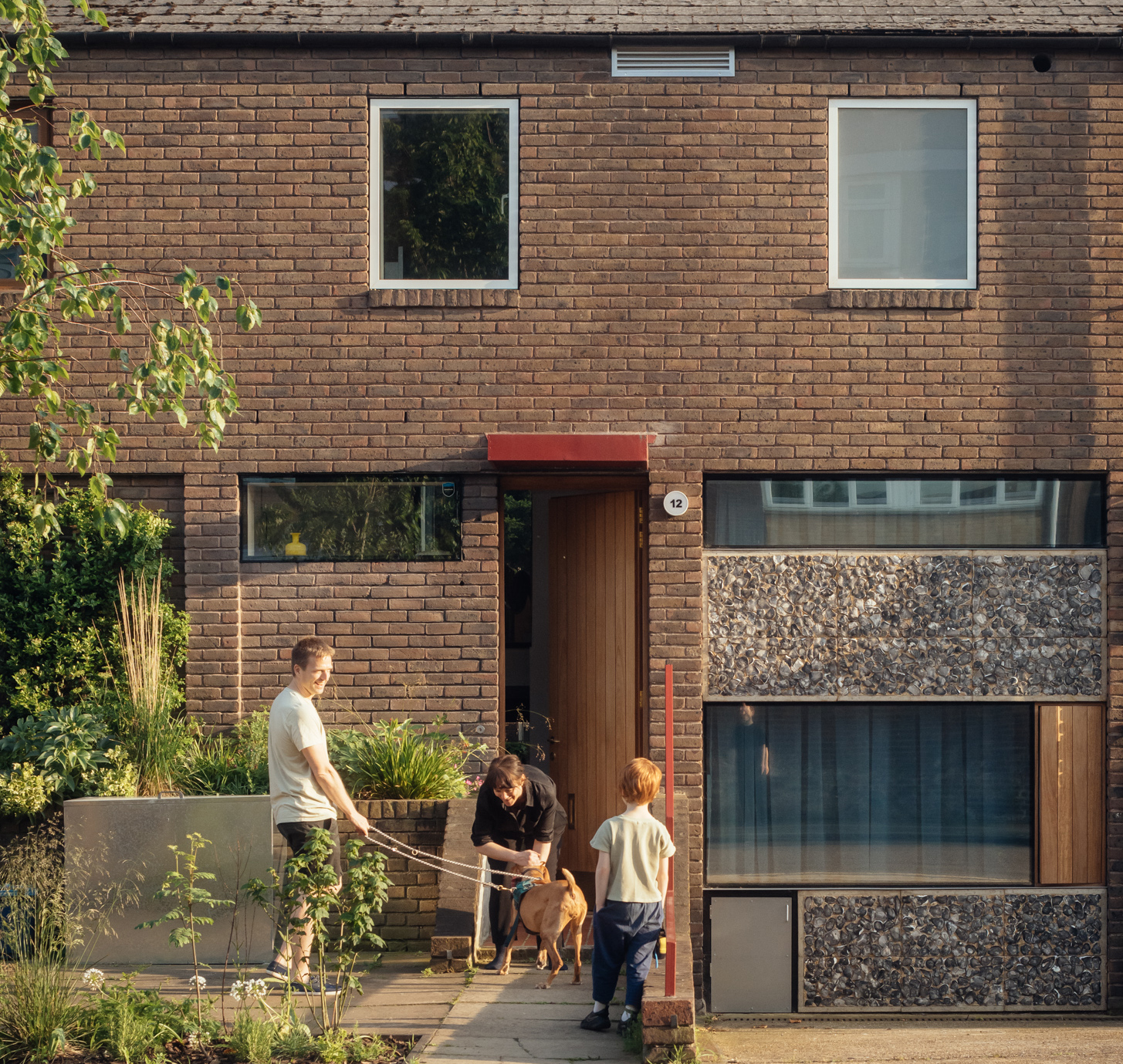
The nondescript street façade, once overshadowed by a front garage and concrete driveway, now boasts new frameless glazing, a red metal front door canopy and matching handrail, and period-appropriate textured flint panels replacing the garage door. Meanwhile, a series of planters and shrubs soften the house’s rectangular lines.
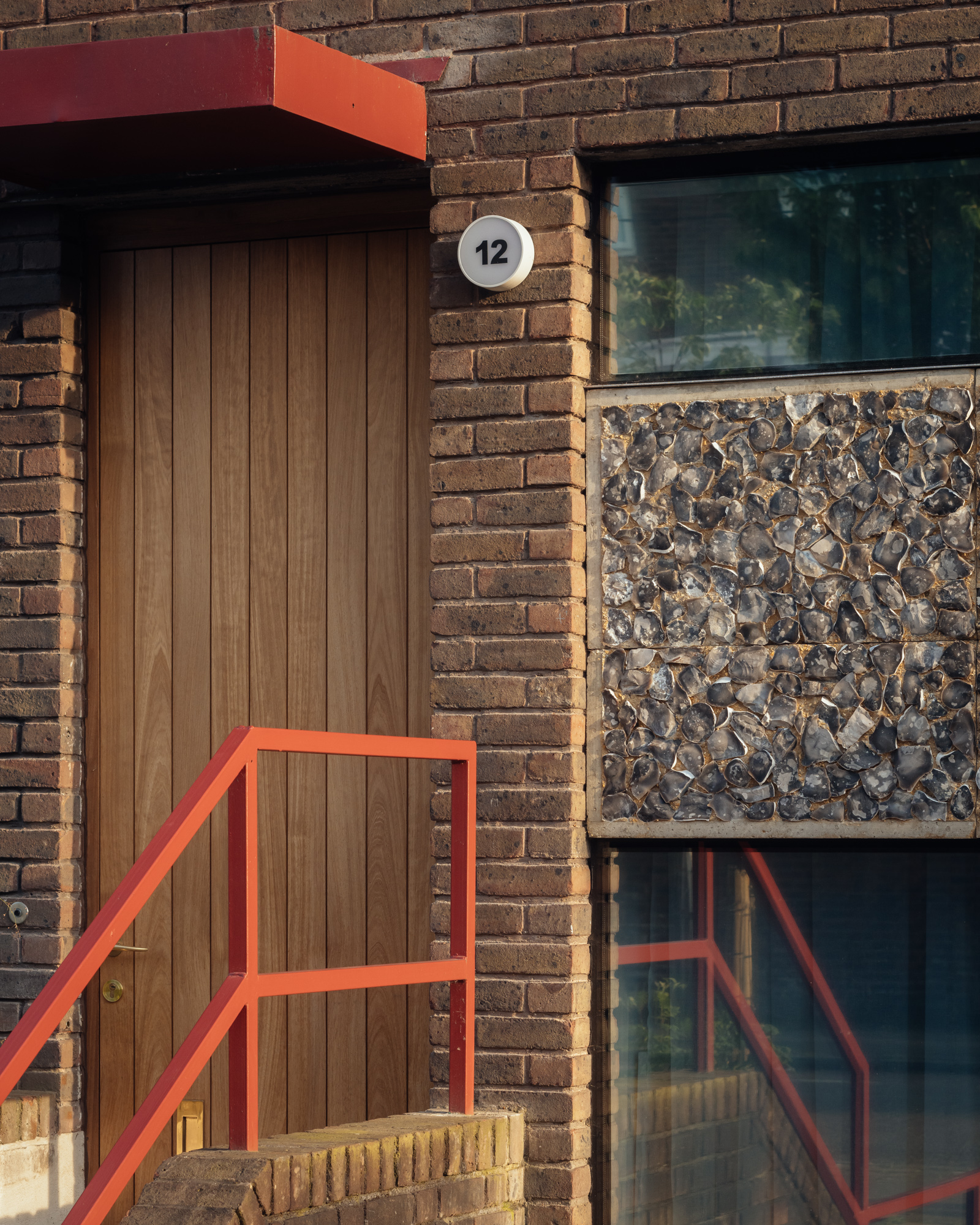
Inside, Hybschmann and Archmongers co-founder Margaret Bursa have retained the robust masonry, timber framework and exposed concrete elements of the original building, but made the space more generous by converting the garage into a bedroom, and adding a new concrete extension, cast in-situ at the rear of the property, to create a large kitchen and dining space.
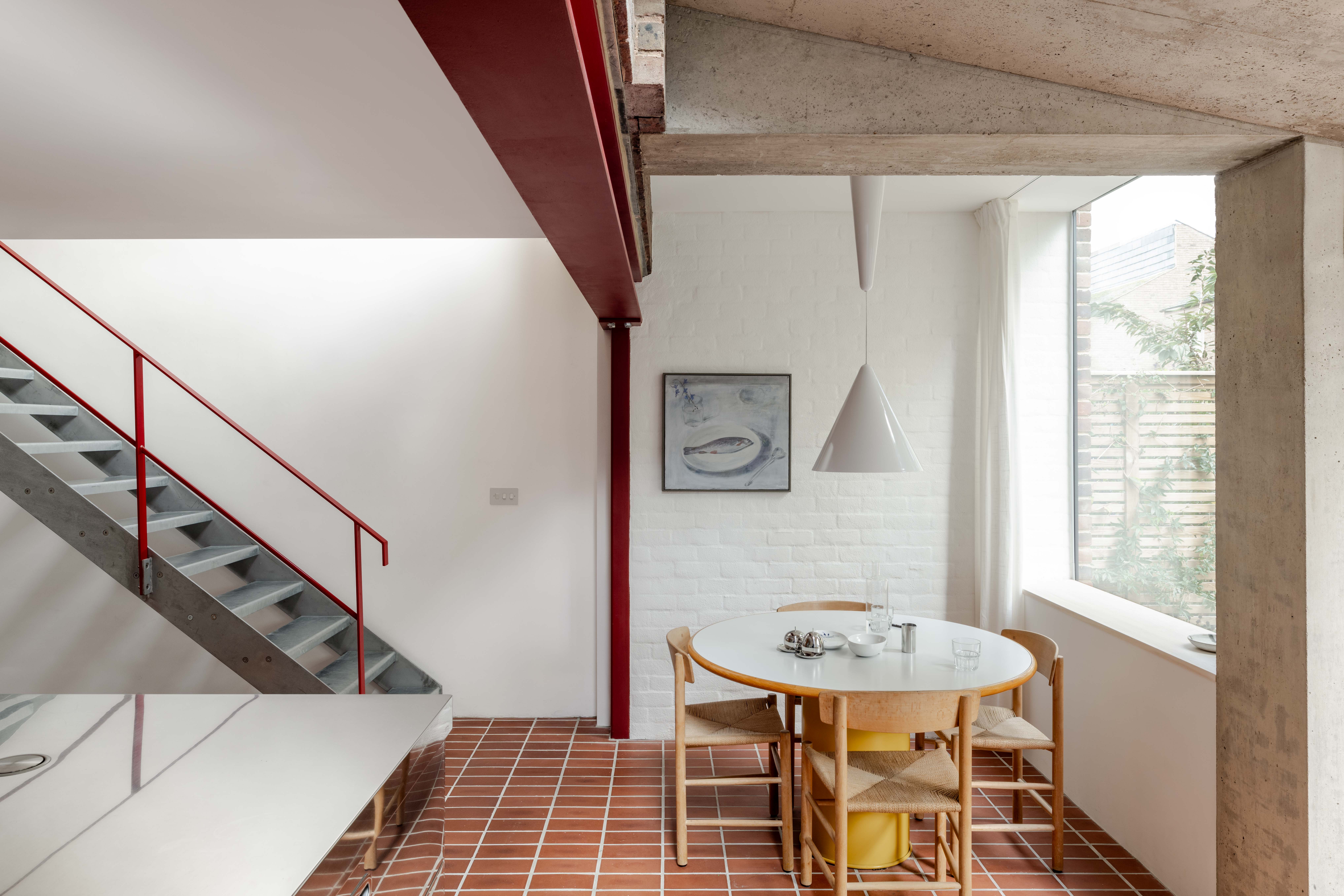
‘We knew the house had the right DNA to become a special place to live, but it turned out to be an even stronger framework than expected, with the house itself guiding the significant transformation, deploying bold forms and honest self-finished materials to enhance what was originally there,’ says Hybschmann. ‘It was rewarding to work in this way and although the house has been radically changed, it still very much feels like the same house, nestled in its terrace.’
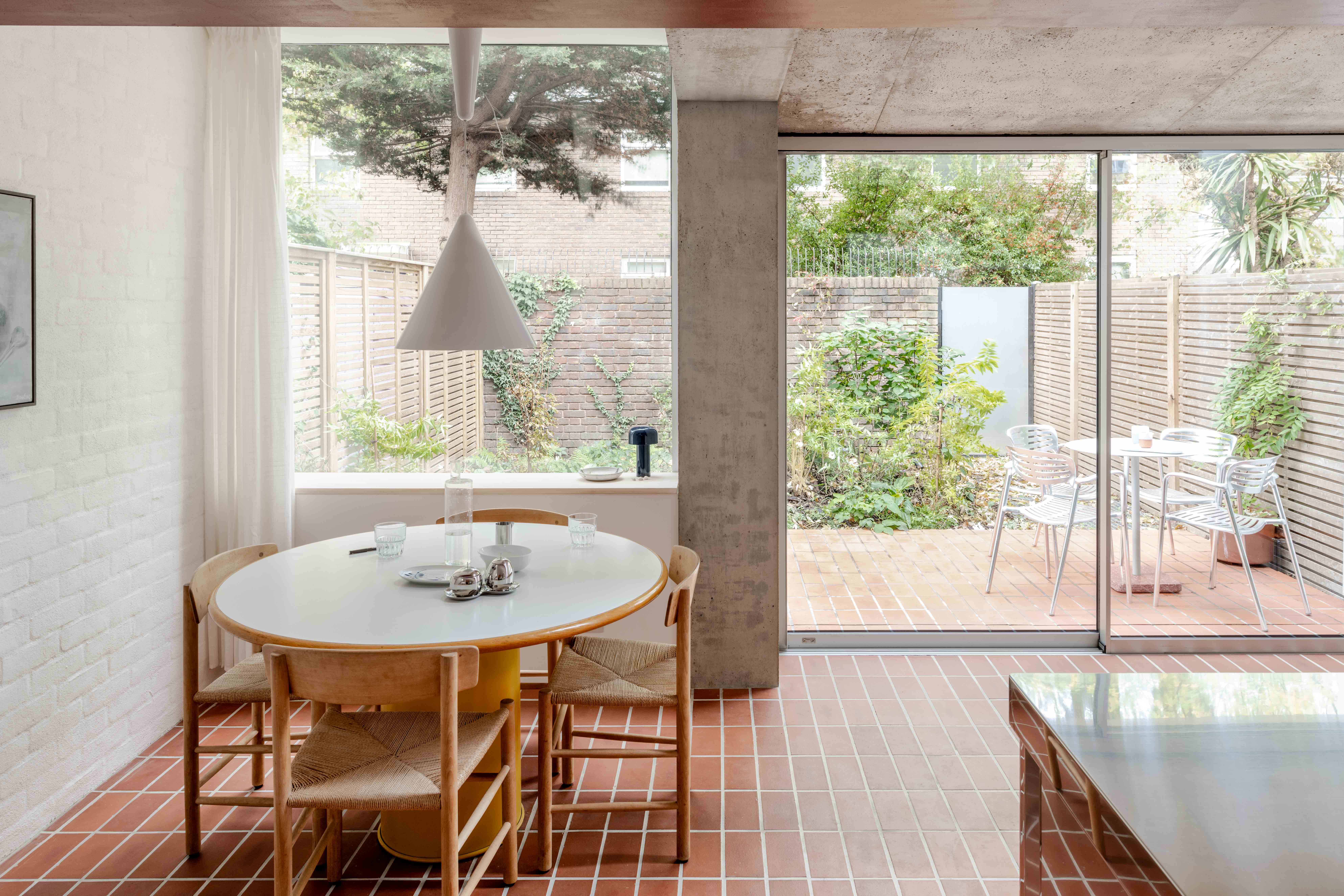
Elemental House is spread over three floors and includes a ground-floor kitchen and guest bedroom, a first-floor lounge, and two top-floor bedrooms, with two half-levels housing a small study and family bathroom. Archmongers’ approach focuses on using exposed materials, and its design scheme here employs a simple palette of existing brick, galvanised steel, cast concrete and timber.
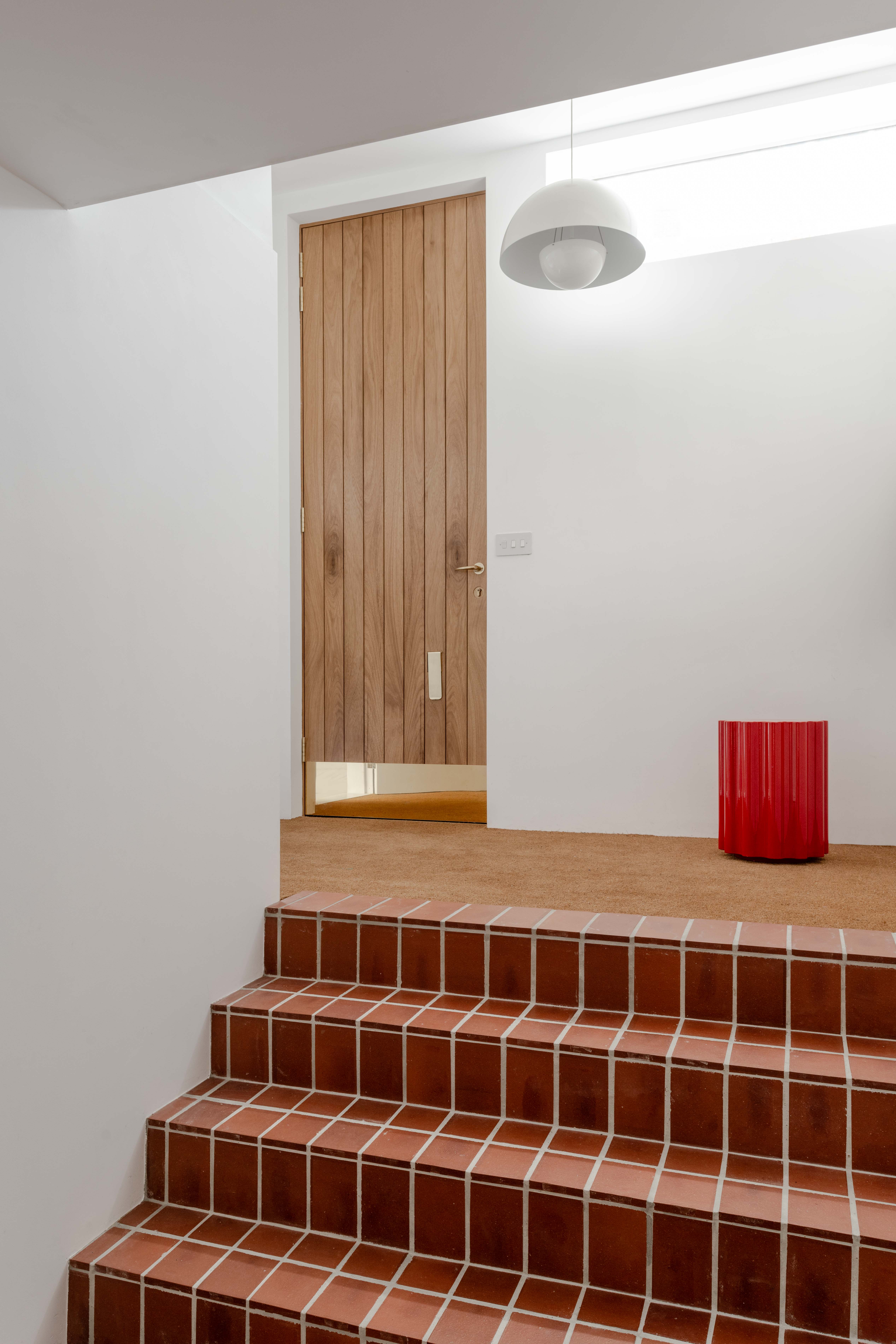
To make the most of the original materials and structure, plasterboard walls and the underside of the stairs have been removed, while strategically placed internal windows flood the interior with natural light. Particularly successful are the bedrooms, where removing the loft space has revealed the original timber frame and created high-ceilinged spaces that feel much bigger than they actually are.
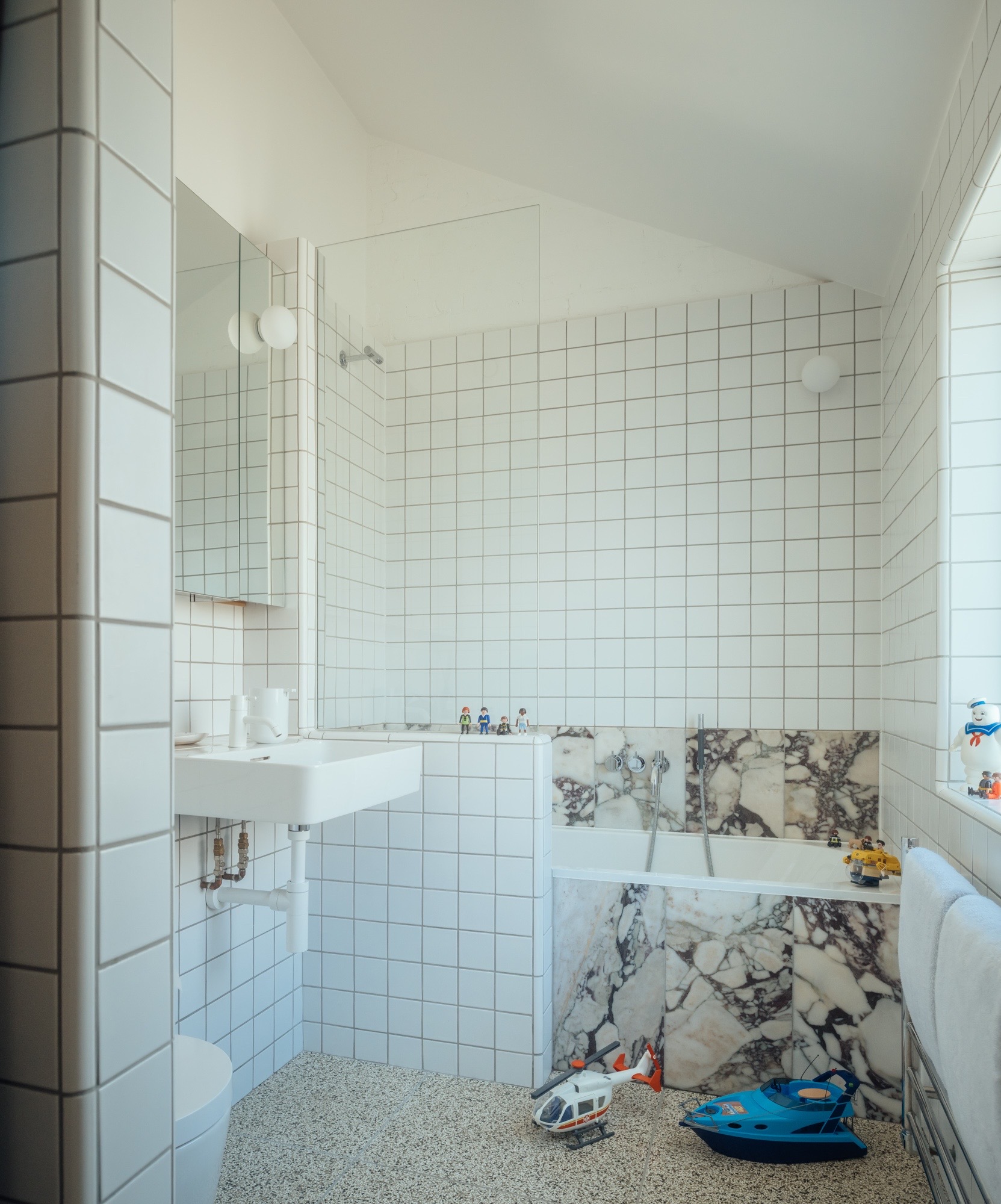
The grey brick, white-washed walls, natural timber and terracotta tiles nod to Hybschmann’s key inspiration, modernist buildings in his native Denmark, specifically Wohlert’s Louisiana Museum of Modern Art, Finn Juhl's house in Ordrup, and Arne Jacobsen’s Søholm houses – and Aalto’s homes in Finland.
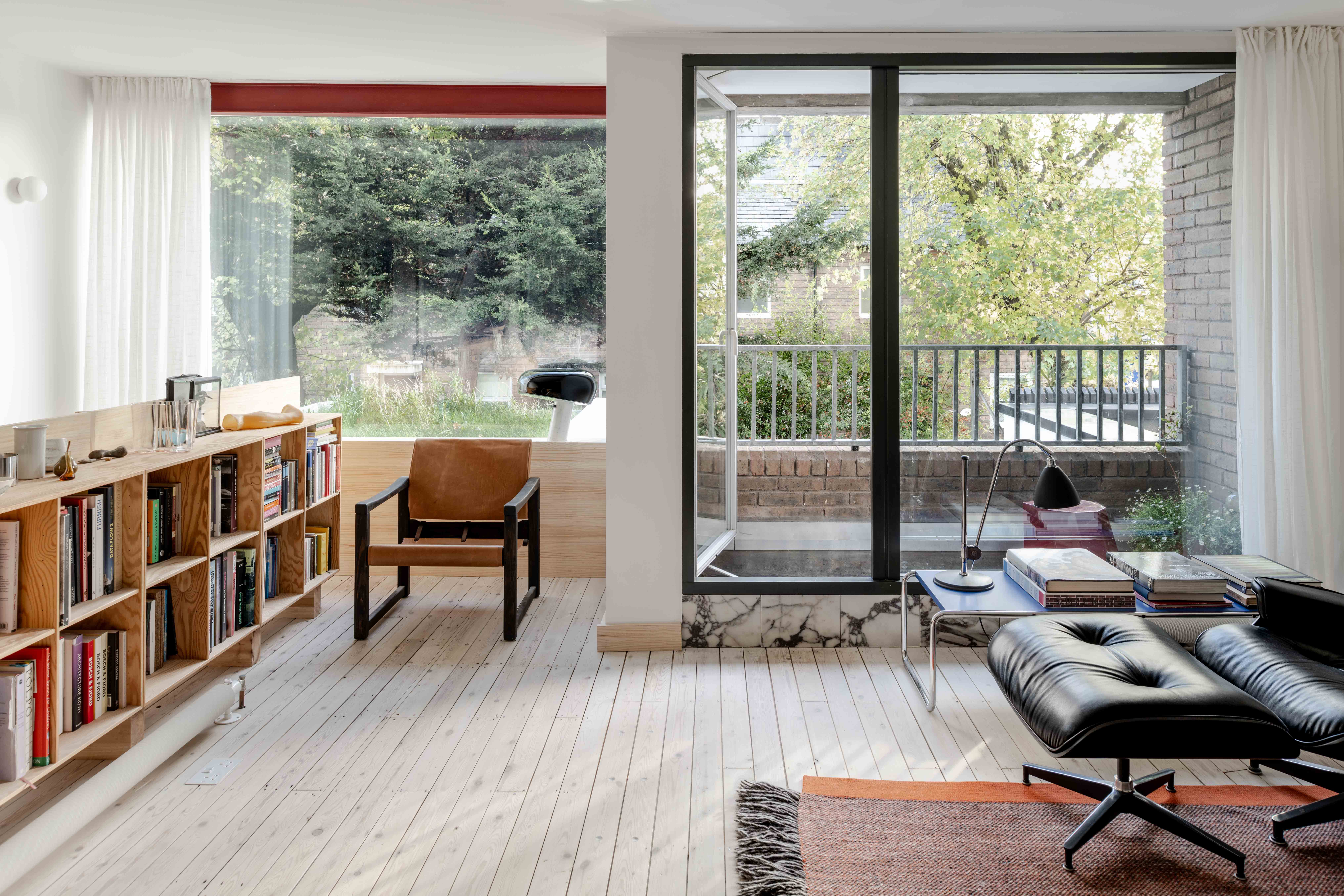
Carefully crafted joinery throughout the house showcases different types of wood, from knotless pine for the bannisters and shelving to iroko for the front door and handrail, and Douglas fir for the bespoke kitchen cabinets, built by carpenter Jacob Alexander Studio. They are paired with a sturdy stainless steel kitchen island and an oil painting by Haidee Becker.
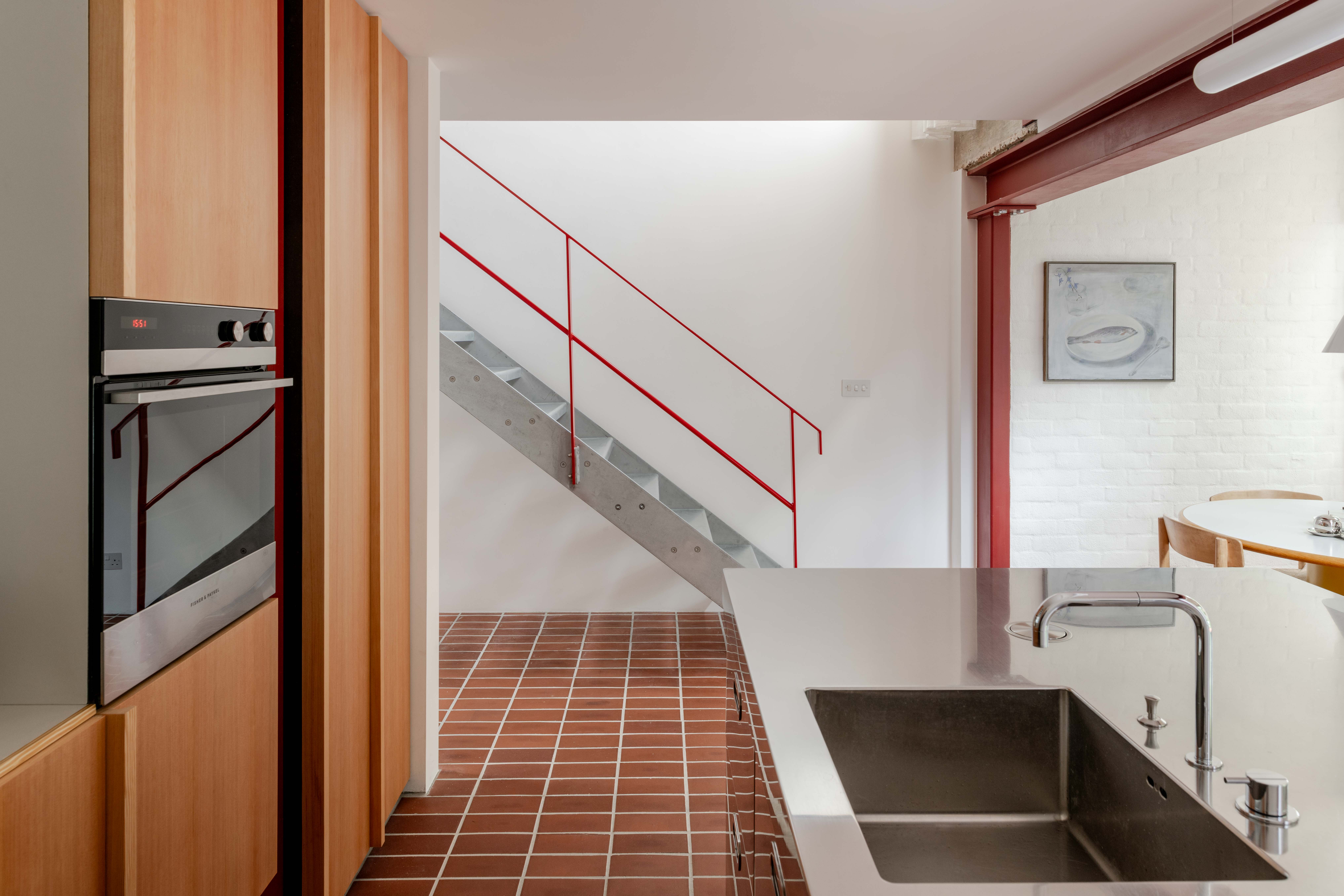
On the first floor, a picture window frames views of the new wildflower green roof, while the ground floor’s terracotta brick floor tiles extend outside to form an outdoor dining terrace, with sliding doors creating a seamless transition to the garden, which is planted with indigenous species and features a small pond to encourage wildlife.







